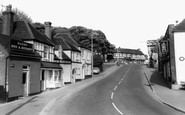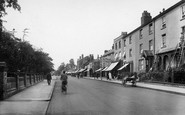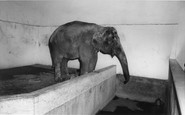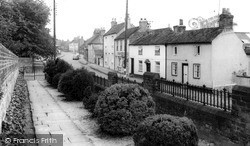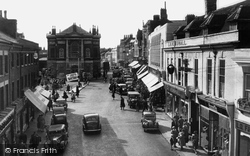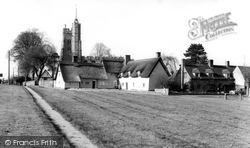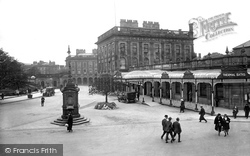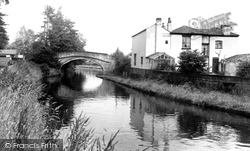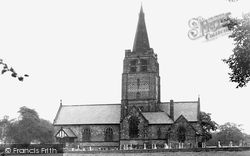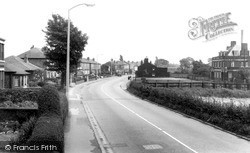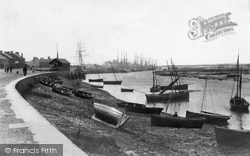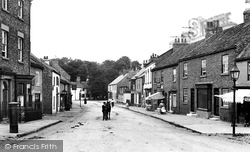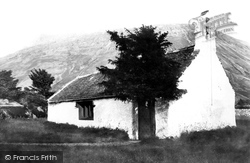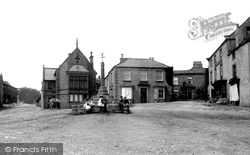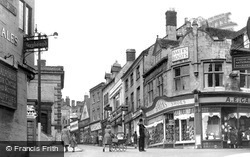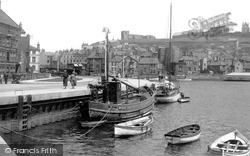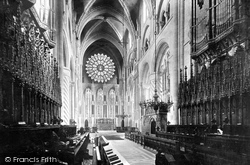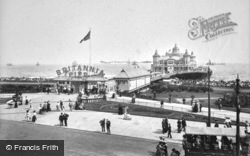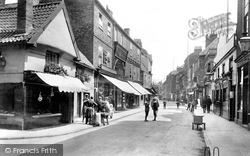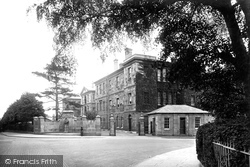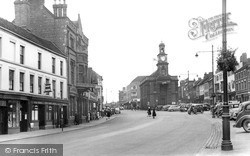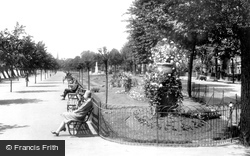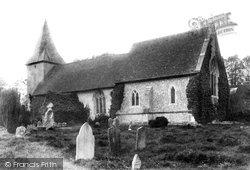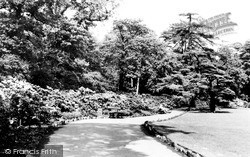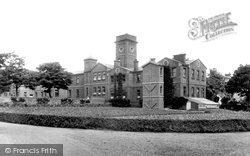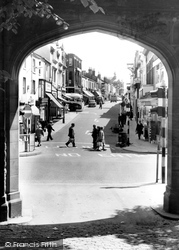Places
18 places found.
Those places high-lighted have photos. All locations may have maps, books and memories.
- Hythe, Kent
- Hythe, Hampshire
- Small Hythe, Kent
- Bablock Hythe, Oxfordshire
- Methwold Hythe, Norfolk
- Hythe, Somerset
- Hythe, Surrey
- Hythe End, Berkshire
- The Hythe, Essex
- Egham Hythe, Surrey
- West Hythe, Kent
- New Hythe, Kent
- Broad Street, Kent (near Hythe)
- Horn Street, Kent (near Hythe)
- Newbarn, Kent (near Hythe)
- Newington, Kent (near Hythe)
- Broad Street, Kent (near Hythe)
- Stone Hill, Kent (near Hythe)
Photos
360 photos found. Showing results 2,521 to 360.
Maps
101 maps found.
Books
10 books found. Showing results 3,025 to 10.
Memories
4,406 memories found. Showing results 1,261 to 1,270.
The Fullers Of Methwold Hythe
Our Fuller family has its origins in Methwold and Methwold Hythe, back as far as records go and up until the 1930s. Many other good old Methwold names like Wortley, Dusgate, Riches, Rolfe, Royal and Simons cross into ...Read more
A memory of Methwold by
Growing Up In Aberkenfig
Growing up and the family - Part 1 My grandfather William Morgan Cockram (son of Lewis Cockram) and grandmother (Mary Cockram) (granny and grandpa Cockram) took over the ironmongers after the death of John Richards. ...Read more
A memory of Aberkenfig by
Clara Vale
My family lived in Stanner House, a lovely old house in Clara Vale from 1952 until 1964 - my parents moved there shortly after they got married in 1951. I was born in 1958 and can remember the house as if it was yesterday. In the 1800's ...Read more
A memory of Ryton in 1963 by
Townfoot Farm
I was born 1949 and lived at Townfoot Farm till 1957. I knew of the Tinniswoods, I am not sure which generation. My dad was a friend of Loise Judson and I remember the son John. I had a friend in Andrew Kidd and were good friends of ...Read more
A memory of Lazenby in 1957 by
My Grandfather Ernest Harrison
My grandfather Ernest Harrison was born in Burton in Lonsdale in 1880 to John Parker Harrison a master tailor one of 3 boys and 12 girls (some died young). My grandfather told us of a time when he skated ...Read more
A memory of Burton in Lonsdale in 1880 by
Schooldays In The 40s And 50s
I was born during the Second World War in 1942, the 8th child to my parents at Goose Bridge, Matching Green. My parents were Scottish and people thought they were foreign. My dad worked for Mr Gemmill's farm ...Read more
A memory of Matching Green by
Chelmsford, Congregational Church 1895
This lovely building was located just over the river in London Road. Demolished, it was replaced by the present CO-OP, come Quadrant store.
A memory of Chelmsford by
Wreck ('wrack') Hall Farm
My grandmother's family originated on Canvey Island, farming at Wrack Hall from some time in the early 19th century until the death of my great great grandfather, Edward Morley, in 1863. Wrack Hall was so named because ...Read more
A memory of South Benfleet in 1880 by
Chelmsford, Duke Street, 1925.
This shot hasn't changed much on the right hand side at all. There is one more building towards us, out of shot, which is where the present day Co-op Store stands on the corner of Wells Street. The large building in ...Read more
A memory of Chelmsford by
Cleethorpes Zoo
I believe the elephant in the picture was named Tanya. I have fond memories of the zoo as my father Dave Mosley moved us from Derby to Cleethorpes in 1965 as he was employed by the zoo to do some building work, we as kids used ...Read more
A memory of Cleethorpes in 1965 by
Captions
4,899 captions found. Showing results 3,025 to 3,048.
The village was established around the manor and three large estates; much of the land was owned by the Lennox family.
The large building is the Market Cross and Theatre, built by the Adam brothers in 1774-80. To the left the shops include Hepworth's, Home and Colonial, and International Stores.
Church Cottages, or Hyde Park Corner Cottages, are five almshouses run by the George Savage Trust. In 1971 they were severely damaged by fire, and were rebuilt and reopened in 1972.
Buxton's warm springs are thought to have been first discovered by the Romans, but it was the Duke of Devonshire who really popularised the lofty Georgian town (its stands at over 1,000ft above the sea
The towpath on the right bank was used by the horses which once pulled the barges. Grappenhall has two of the characteristic narrow hump-backed bridges designed to carry road traffic over the canal.
Consecrated in May 1885, the church was entirely financed by the first Sir Gilbert Greenall, a devout Anglican.
By the 1950s, most people associated it with the dreadful smell emerging from the infamous bone works.
A royal burgh and port, Irvine was, by the 1920s, a town of 7,000 inhabitants.
The first mail coach from London reached here on 16 October 1789, superseded a century later by the railway. Just beyond the old Swan Hotel, centre left, is the entrance to Boroughbridge Hall.
It is surrounded by the dramatic mountains of Wasdale, popular with walkers and climbers, and as a result is one of the most visited churches in the Lakes.
It passed into the hands of the Neville family, and Richard came here to be tutored by the Earl of Warwick, whose daughter Anne he later married.
A policeman stands on point duty at the junction of Lansdown, King Street, the High Street, and Gloucester Street, with the Greyhound Inn, built by the Stroud brewery in 1904, on the extreme
In those days before people worried about pollution, most of the buildings were blackened by the continual shroud of coal smoke from domestic chimneys.
Above the high altar is the magnificent rose window, over 98 feet in circumference, depicting Christ surrounded by the twelve apostles and the twenty-four elders.
This too was destroyed by a blaze in 1914, which was allegedly started by the Suffragettes, who had been refused permission to hold a meeting there. A third pavilion opened within months.
On the left the butcher takes time out for a chat, while the young boys are either intrigued by the antics of our cameraman, or waiting for something to run him over.
The lodge by the gate has now gone.
By the beginning of the 17th century those Englishmen who could afford it had taken up the craze for smoking tobacco in pipes made of clay.
This one, however, did not get renewed after World War II by the Indiana Limestone Company, and only the plinth survives.
Massey's Folly, as it is known, was constructed by the eccentric Reverend Massey, a vicar of Farringdon between 1857 and 1919.
His estate was confiscated by the Crown and later given to Margaret Tudor and her husband the Earl of Lennox. Their son married Mary, Queen of Scots.
The County Lunatic Asylum was built at Stone, three miles west of Aylesbury, in the early 1850s by the architects Thomas Wyatt and David Brandon.
Chapel Street is framed by the arched entrance to St Mary's Roman Catholic Church and its grounds. The arch is a memorial to a past priest, Father Crank, and was put up in 1913.
One of many millponds used by the Sussex iron industry.
Places (18)
Photos (360)
Memories (4406)
Books (10)
Maps (101)


